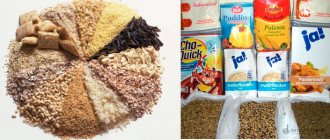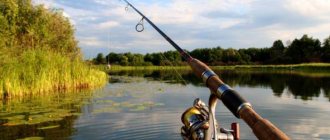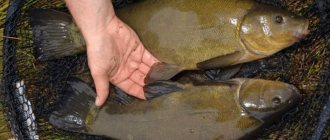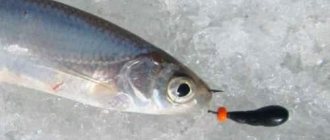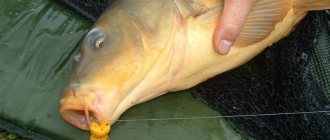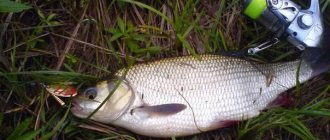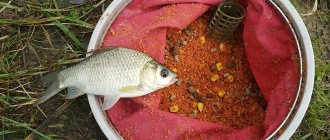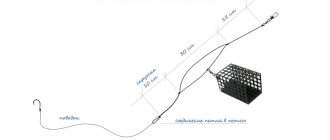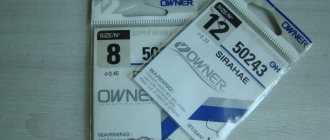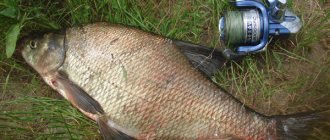Here is a guide to preparing the most catchable bait for bream with your own hands for each season - spring, summer, autumn and winter. Our recipes are well suited for fishing with a ring from a boat, using a feeder from the shore, and for ice fishing in winter fishing with a float or jig. In addition to homemade ingredients, we also recommend using store-bought mixtures in addition to our recipes; they will add an additional smell and fine fraction to your composition, which quickly spread in the current and additionally attract large and small bream.
Bream never refuses good bait and actively reacts to it.
If we are talking about baits that are made independently, then you should adhere to some rules:
- Peas have always been considered the main ingredient for bait, which bream loves. He always reacts actively to the smell of peas. If you add it to complementary foods, the fish will only be happy about it.
- Proportions should be observed when adding peas to complementary foods. You should not overcook it, although the smell and taste remain, but after adding it, the mixture may become blurry, especially when flowing. So there is no need to puree the peas; the whole halves should remain in it.
- If you plan to add pearl barley to the bait , then before cooking it must be thoroughly washed to remove viscosity. It is recommended that even after the cereal is cooked, you also rinse it. This process also applies to wheat.
- You need to cook millet porridge with caution. Under no circumstances should it be overcooked, as it can ruin the entire bait. Bream does not disdain wheat, which must be kept soaked for about two days.
- Maggot added to the bait has a good effect. It can be added live or pre-scalded. Bloodworms are also used, which attracts the attention of bream and small fish.
The best and most catchy bait is a mixture that can attract bream even in the absence of a current, not only on a lake or pond, but also on a river. This happens even on the Volga River, when the flow is turned off by a hydroelectric power station. Purchased mixtures that have proven to be the best from the company are Chernaya Dunaev and Fadeev Bream, Dunaev Premium, sports Sensas Bream, Traper Bream, Minenko Bream. From the budget: Aqua Master, homemade bait with the addition of peas, chocolate and dark garlic. The basis for bait for the lazy can be ordinary millet, pearl barley, or even better, check out Salapinka’s recipe; this is a popular bait used for catching not only bream, but also crucian carp, roach, ide, and carp.
Also, during the winter seasons of first ice and deep winter 2016-2018, Pelican spices with a nutty smell and Fishbat humidifiers, which make it possible to better combine the entire medium and large fraction into single lumps, which is important for winter fishing when fishing from ice, have proven well.
| Winter | December | In the winter months, in cold water, homemade bait with the addition of bloodworms and maggots is good. Key cereals – pearl barley, millet. As for color, in winter the darker the bait, the better. |
| January | ||
| February | ||
| Spring | March | Garlic flavors and attractants work well. From store-bought baits |
| April | It is better to fish with bait mixtures from Traper and Sensas. They are based on a lot of bloodworms and small loose fraction, which is suitable for catching bream both in currents and in still water. In the spring months, the brighter the color of the bait, the better. | |
| May | ||
| Summer | June | In summer, the main secret in feeding bream is sweet tastes. Anise, sugar, vanilla are excellent flavors for your store-bought, homemade groundbait and bait. The working purchased formulations are still the same - Sensas, Traper, Minenko, Dunaev Premium. Homemade - recipes from the article and salapinka. |
| July | ||
| August | ||
| Autumn | September | Mix homemade bait with a mixer according to one of the recipes in this article, add garlic extract. Try moistened Fishbat groundbait. The closer to winter, the deeper you will have to look for bream. In November, we recommend trying the carp fishing method. It works well on large bream. |
| October | ||
| November |
Ingredients
If we are talking about self-prepared bream complementary foods, then you should remember that it must contain large fractions of the product. Since bream is a large fish, reaching over 1 kilogram of weight, complementary feeding should be appropriate.
The list of ingredients is quite long, but the preferences of the fish should be taken into account.
This is what is included in the standard bait for bream:
- pea grains;
- porridge from pearl barley, millet, oatmeal, wheat;
- dry oat flakes;
- breadcrumbs;
- corn flour;
- cake and bran;
- peanut;
- roasted sunflower seeds;
- cornflakes;
- bloodworms, maggots, dung worms;
- canned corn and peas;
This list has been tested for years. It can even be called a kind of old-fashioned composition for a guaranteed result. But let's figure out what proportions and what additives need to be used in order to make the most catchable bait.
Watch the video, this is good practice for preparing groundbait.
What do we not support and urge you to categorically not use?
- Bagel for bream. Tackle with a large number of hooks. The fishing method is unsporting and damages the fish.
- Tackle with several hooks.
- Bite activators for winter and summer fishing.
Flavors
To make the bait have a more pronounced smell, various flavorings are added to it.
They are usually purchased at the store, and they are not too expensive. When using them, you must follow the instructions. If attractants are added in small quantities, then the fish will not smell them, but if you add too much, you can completely scare away both bream and other individuals. The correct ratio of complementary foods with flavoring increases the catch efficiency by 80%.
What smells can attract bream:
- vanilla extract;
- anise oil;
- cinnamon and coriander;
- fennel and dill;
- garlic;
- strawberries, banana, pear (they are used to make boilies);
- honey;
It is worth noting that bream like sweet, fruity aromas. Vanilla is effective and also attracts other fish. In any case, you should always experiment, both with baits and flavors.
What else?
- Dips for bait and bait. Liquid flavoring with different sweet and spicy flavors for adding to the composition. Popular flavors: coffee, garlic, vanilla, mixed feed.
- The dough mixed with semolina and breadcrumbs is a killer additive in feeding that lures small bream to the fishing point. Once in the water, the mixture begins to generate dust, which attracts a large number of small fish.
- Bite activators with pheromones or the addition of albumin.
Flavorings for bait
The first places among the flavorings for baiting bream are definitely the smells of anise, hemp and coriander. They work on absolutely any water and are considered universal when catching this fish. They are followed by matting and pepper. They are in less demand, but often bring considerable success, and given that the tastes of fish also vary in different bodies of water, it’s worth trying each one.
In addition, when catching bream, fishermen note the effect of garlic and dill flavoring. And if garlic is universal for many types of fish, then in warm heat dill leaves no chance for bream. It works great if the water temperature rises above 23 degrees. And even though it can be difficult to catch, the catch can pleasantly surprise you.
Sweet scents are also a big hit. Vanilla, milk, biscuit and cream are the smells that bring greater catches in cool weather. In addition, they provide a stronger bite, which is also good news.
Among fruits, bream prefers strawberries, bananas, and pineapples. The first aroma is universal, and the last two, like vanilla-milk, manifest themselves better in the cold. Most fishermen are increasingly focusing on nutty flavors. Almonds and peanuts mostly produce a significant catch. In addition, these scents are not picky about the weather and work just as well in hot weather as in cold weather.
It would be wrong not to mention the aromas of hemp and peas, because with their help, a trip to catch bream can become one of the most successful. By the way, our great-grandfathers caught this fish using pea porridge as the main bait. Over time, this method has not lost its relevance; it has only been slightly modified: it is not used as an independent food, but flavors, dyes and large granules are added to it.
Homemade bait recipes
For bream you need to prepare a lot of bait .
You should always have some supply with you, since fishing can be activated and you will have to feed the future trophy with something. When fishing with a donk and a feeder, use feeder weights, and when fishing with a float, make balls. In specialized stores, ready-made bait is sold, but it is not cheap, and given the fact that you need a lot of it, the pleasure can hit your pocket. The simplest and cheapest option is to prepare bait at home.
The best ways to cook homemade catch bait:
Excellent bait, attracts bream during feeder fishing. It works ideally in the fall (it’s convenient to fill the feeder weight with donks) and in the winter when fishing from ice.
Recipe No. 1:
- Boil oatmeal and millet over low heat During cooking, you need to make sure that the mixture does not burn, as there will be an unpleasant smell.
- Further preparation continues at the fishing site.
- Clay or sand is added to the porridge so that the cereal holds its shape.
- to the finished mixture .
- Small balls - 5-6 pieces - are molded from the resulting mixture
Recipe No. 2:
Super bait, works well as bait. You can prepare the mixture with your own hands even on the day of fishing; it is ready in 1 hour.
- The bait is done immediately before fishing.
- Mix bran , sunflower cake, corn sticks or flakes, coffee drink, bloodworms and maggots in a bowl.
- Water from a pond and clay are added to this mixture, and everything is kneaded until it becomes a thick dough. You can let the bait sit for a few minutes.
- Then the balls are molded and thrown into the water. While fishing, you can make very small balls and throw them into the water to keep the fish in place.
Recipe No. 3:
An old grandfather's bait that makes bream bite even in ponds with no current.
- On the shore of the reservoir, the following ingredients are mixed in one bowl: steamed peas, bran, flax seeds (fried), egg powder, fresh grated beets, worms, maggots, clay.
- After kneading, balls are made and sent into the water.
Experienced fishermen always experiment with bream food.
But there are universal mixtures that work under almost any conditions. Recipe:
- In a saucepan you need to boil 3-3.3 cups of water.
- Add 2.5 cups of pearl barley to boiling water It must be cooked until half cooked.
- After the pearl barley swells, millet is added.
- to add flavor .
- The porridge should be cooked until most of the water has evaporated.
- After this, turn off the pan and cover with a lid and leave for 40-45 minutes so that the remaining water is absorbed into the cereal.
- After this time, the porridge must be transferred to another container.
- Add 3 cups each of barley and corn to the warm mixture
- At the fishing spot, you can already add clay and water for better mixing.
Adviсe:
- Barley and millet groats cannot be replaced with anything.
- Instead of barley and corn grits, you can use crackers, cake, and store-bought bait.
When fishing from a boat, for example, using a ring, use regular feeder bait. It has all the necessary elements so that the feeding balls do not disintegrate before they reach the bottom.
What you need to know to prepare bait for your feeder with your own hands
Any feeder bait consists of a base and additives. Their ratio ranges from 80/20 to 50/50. To simply attract fish, one basic is enough. But to really interest her, to make her stand in one place waiting for another tasty morsel, you need a properly selected supplement.
as a base : dry cereal with a fine fraction (semolina, oatmeal, oatmeal), crushed baked goods or confectionery products, pureed cake, crushed peanuts, sunflower or pumpkin seeds, hemp seeds, coriander grains, milk powder, fish meal.
The task of the base is to provide the necessary consistency, crumbly or viscous, which will create a feed cloud in appropriate conditions. What exactly your bait should be depends on the characteristics of the place where you will be fishing.
- The stronger the current, the more viscous the bait should be so that it does not wash away too quickly.
- A mixture that is too loose will easily scatter when casting when it hits the water and will dissipate before it has time to sink to the bottom.
- The components of the base are interchangeable, but each of them behaves differently at different temperatures, transparency, and other characteristics of water.
In addition, the base should be dusty enough to attract the attention of fish even from afar. And then the additional ingredients come into play.
additive particles are larger in size. They are used to ensure that the fish, attracted by the base, find something to eat and linger in search of new delicacies. The additive loaded into the feeder should not scatter far, causing the fish to circle around the baited hook. At the same time, the radius should be sufficient so that even the most fastidious gourmet forgets about caution and cannot deny herself the pleasure of eating your treat.
For this, steamed bran, wheat, pearl barley, peas, corn, and various cereals are used. Of the animal components, chopped worms, bloodworms, and maggots are added to the bait.
- An important rule: the bait must contain a delicacy that is used as bait on the hook.
- To cook porridge for bait, just bring the cereal, filled with water in a ratio of 1:2, to a boil, then wrap the pan and put it in a warm place overnight. A small amount of cereal (for example, a glass) can be steamed in a thermos.
In addition, the bait for the feeder contains flavorings and natural flavor enhancers that stimulate the fish’s appetite. For this use:
- aroma oils;
- fruit syrups;
- honey;
- caramel and caramel essence;
- coffee, chocolate, cocoa;
- vanillin, cinnamon, ginger;
- other fragrant spices.
Modern industry offers an artificial substitute for each of these ingredients. However, experienced fishermen claim that fish like natural products more and bite on them more often.
How to fill a feeder feeder with bait
Filling the feeder with a mixture of base and additives or laying them in layers is not important. In each specific case, you can try both options and decide which one works better in your conditions.
Much more important is how firmly to compact the bait . The feeder should be released within 5-10 minutes to form a stable bait spot. This is what determines the desired density and viscosity of the prepared treat.
Bait according to the season
Ingredients for bait should be selected taking into account the time of year, since bream’s tastes and food needs change:
- The following recipe is suitable for the summer period: Mix cake, breadcrumbs, oatmeal, peas (sprouted) and 2 teaspoons of ground coriander in equal proportions. Clay can be added to the finished mixture for better viscosity. After this, balls are made and thrown into the places where fishing is planned.
- For the summer period in standing water. Millet boiled until half cooked is mixed with bran. Next, breadcrumbs and sunflower seeds (preferably fried to add flavor), cinnamon and coriander in small quantities are added. On the shore of the reservoir, the mixture is mixed with the addition of clay. After which the complementary foods are ready to be added.
- For early and late autumn. Mix breadcrumbs, boiled rice, cake, bran (rye or wheat), ground coriander, finely chopped lard, worms or maggots in a bowl. Then everything is done according to the previous kneading scheme.
- For the winter period when ice fishing. Peas, corn, hemp grains, peanuts, and buckwheat are fried in a frying pan. During frying, the food must be stirred constantly so as not to burn. After this, all ingredients must be ground in a meat grinder. To this mixture you need to add crackers, bran, coconut flakes, a little cinnamon, cocoa, a pinch of salt and dried dill. As a result, you should get up to 1 kilogram of dry mixture. Once in place, it should be moistened with water and formed into small balls.
- For the spring period. Sunflower cake, boiled millet, fried bran, coriander and bloodworms (you need to take more of it) are suitable for preparing complementary foods - the fish at this time needs animal feed.
Rules for feeding bream
To get a super bite from bream, in addition to properly selected components of the bait mixture, you need to know the techniques of properly feeding fish. A mixture carelessly delivered to the intended hunting zone will be washed away by the current or will end up in a completely different square of the bottom of the water area, without giving even a hint of positive fishing results. The practical experience of experienced bream fishermen has formulated certain rules for feeding bream, which differ in their principles depending on the fishing method. By adhering to the rules when preparing the feeding spot, you can certainly count on a positive fishing result.
Feeding bream with a feeder
When fishing on a feeder, bait for bream is supplied to the fishing zones using heavy and capacious feeders. If in stagnant waters setting up a feeding table at the bottom of a reservoir is not particularly difficult, for which you just need to select a stationary landmark and clip the cord at a certain distance, then when hunting on currents there are a lot of difficulties that impede quality preparation. First of all, you should pay attention to the accuracy of the cast, which should land at the same point over and over again. The casting itself is performed at a slight degree against the current.
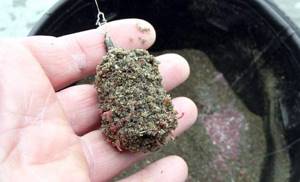
After splashing down the feeding device, the feeder rod is kept in its final position after casting, without starting to wind the cord, allowing the feeder to completely lower and lie on the bottom. Starter feeding includes feeding at least 10–15 volumetric feeders, after which half an hour should begin to bite, no matter what kind of fish. It is the bream itself that approaches the point no earlier than an hour, or even two. Otherwise, you should think about changing your location.
Feeding with lumps when fishing with a float rod
The feeding technique when fishing with a float rod is based on a powerful starting feeding or installing bait with subsequent additional feeding. Supplementary feeding is carried out in small portions, forming balls the size of a walnut, maximum tangerine, from the bait mixture. To make the lump heavier and quickly deliver it to the bottom of the reservoir, feed is mixed with clay. Lumps are delivered to the point where the feeding table is covered by direct casting by hand or using devices in the form of slingshots or catapults, which work from casting using a spare rod. When fishing at short distances, lumps can be fed with a cup on a long pole, which further increases the accuracy of feeding.
Important! When adding an animal component to complementary food, and, in particular, maggots and bloodworms, it is recommended to crush it, preventing the rapid spread of the larvae.
The accuracy of casting and the subsequent fishing location are determined taking into account the force of the current, which carries the lumps away from the fall of the food into the water, which must be paid attention to when starting both the feeding itself and the subsequent fishing. Indeed, often the cause of failure is precisely this factor, in which the fish are collected in a completely different place from the point where the bait is subsequently supplied. An interesting and effective method of feeding is by means of a mesh bag attached to a cord, when it is filled with a bait mixture and cast directly, or with the help of a boat it is installed in the fishing area, feeding the bait into a train or a muddy spot of food. A float is tied to the bag, indicating to the angler the location of the bait on the surface and reducing the likelihood of the bag being caught by a hook.
Feeding bream in winter

Winter bait for bream when fishing from ice is not immediately diluted with water, but is delivered to the bottom using a special semi-automatic cone-shaped feeder. The design of the feeder contains holes through which its volume is filled with water, soaking the bait mixture. The feeder lowered to the bottom is held at the bottom for half a minute and only after that it is emptied, rising above the ground no higher than 10 cm.
In still waters, fishing is carried out directly in the hole where complementary food was supplied. When fishing on a current, a hole is drilled along its course, where the attracting mixture is carried away by a water stream. It is worth considering that in winter, complementary feeding is done once, subsequently adding the mixture only when the intensity of bites decreases. By overfeeding inactive fish in winter, a fisherman may be left without a catch, even being confident that he is standing in the right place for hunting.
Lure for bream on the feeder
Large specimens, as a rule, are found at depth and it is very problematic to catch trophy bream from the shore. In this case, a feeder comes to the aid of the angler, with which you can make long casts.
Bait for catching bream on a feeder can be purchased at the store, but experienced fishermen have learned to prepare it themselves at home. Traditional mixtures must contain large feed particles.
This is necessary so that when casting the feeder the mixture does not get carried away with the current. Usually, pearl barley, corn, peas, worms, maggots or bloodworms are added to the bait.
This is done to ensure that the bream remains in the same place. After all, in a matter of minutes he eats the dusty food and goes on in search of food. And if there is real food at the bottom, it will hold it.
Minenko, Traper, Dunaev are the best baits for bait.
Do-It-Yourself Bait for Bream. Manufacturing
Making effective bait requires serious theoretical knowledge and practical fishing skills. Therefore, the ability to solve this problem yourself is highly valued in the fishing community.
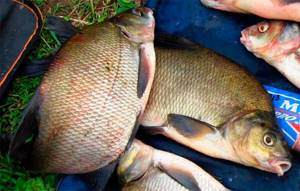
Pros and Cons of Prepared Groundbait
The advantages of making your own bait mixture include:
Possibility of strict quality control and maintaining the required proportions of ingredients;
In fishing areas, the use of expensive components included in branded mixtures is not justified, so the fisherman can optimize costs;
If necessary, bait can be quickly produced without visiting specialized stores;
Making the mixture yourself allows you to achieve unity in the fishing process at all stages.
Of course, the “Home Option of Bait” is not without its disadvantages:
Regular bait attracts not only bream, but also a variety of other carp fish, including roach and rudd;
Manufacturing requires time;
Finding the right recipe can take a long time.
Rules for preparing and using bait
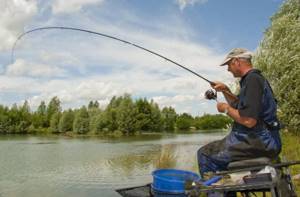
The set of ingredients and the amount of bait are usually determined on the pond. Fishermen prepare all the components for bait at home and mix them before starting fishing. The composition and preparation of complementary food for bream depends on the weather and current.
For reservoirs with large or moderate currents, complementary foods with sufficient density are used. To do this, use heavy bait with the addition of soil fillers. For viscosity, you can use eggs, flour, bread, clay. During the current, complementary foods are given in small portions.
If you plan to fish for large fish, then there should be a lot of complementary food, since small fish always accumulate in the casting areas in search of food.
With a weak current. The food balls should erode within 30-45 seconds after casting. Heavier baits are thrown onto the fishing site in advance to keep the aquatic inhabitants in place.
Before casting, you can do a small test to determine the density of the ball. To do this, throw complementary food at a visible distance and observe how long it takes to wash out. The main components are sunflower cake and crackers. They are combined with egg or milk powder.
Weather conditions also affect fish behavior and bait choice. On hot days, bream goes out in search of food in the evening or at dawn. On cloudy warm days it is active throughout the day.
On such days it is better to use bitter baits; for this, it is advisable to add dill or garlic. In warm weather, bream's favorite bait is mixtures with honey, vanilla and other sweet ingredients.
What other bait does bream like?
If we don’t consider popular store-bought baits, or complementary foods that you can make at home with your own hands, then people have several more non-massive ways of feeding this carp fish.
- Dreissen. Large carp fish (bream, carp, carp) love the meat of these mollusks.
- Compound feed. Feed the catch additive correctly
- Coffee. A secret attractant for luring bream and bream.
- Makuha is an effective and inexpensive supplement. Works well to feed bream when the bite is weak.
- Egg. You can add either a boiled or raw egg to the mixture.
- Mormysh. Small crustaceans, in demand in cold weather.
Composition of bait for bream
Making bait for bream at home is not at all difficult; you just need to know a few secrets. Experienced fishermen know that the best bait for bream is prepared immediately before leaving and with your own hands. There are many options, they are united by certain composition requirements:
- An important element will be the sweet taste, because it has been proven more than once that bream has a sweet tooth. The bait for bream must contain honey or sugar.
- All ingredients must be finely ground and mixed well; uniformity is important in bait.
- The composition for the feeder in the feeder should smell, and it is important that the smell is strong, but not cloying.
- Viscosity is also important; the bait should be gradually washed out from the feeder already at the bottom, and not crumble upon contact with water.
- To catch bream, you need turbidity; it is in such conditions that large individuals can search for food for a long time.
- Do-it-yourself bait for bream or from a store should be similar in color to the bottom soil. A strong difference in color will only scare the fish.
- The tandem of bait and bait is the key to successful fishing. The bait must contain particles of the bait used, be it of animal or plant origin.
Summer bait for bream will differ quite a bit in composition from spring or autumn bait, but first things first.
Blitz tips
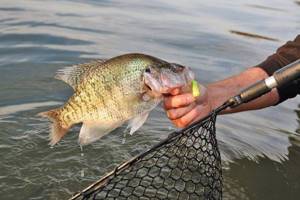
- Bream is a very cautious and timid fish , so you need to be quiet on the shore.
- You should always experiment with food and flavors and find the best option.
- Large individuals , as a rule, are located at the bottom of the reservoir and away from the shore, so to catch it it is better to use a feeder with a feeder.
- Preparing complementary foods should be done at home, and all the ingredients should be mixed directly while fishing.
- for each period of the year , as the tastes and needs of bream change.
Write your reviews about the bait for bream that you use in each season. What are your results?

